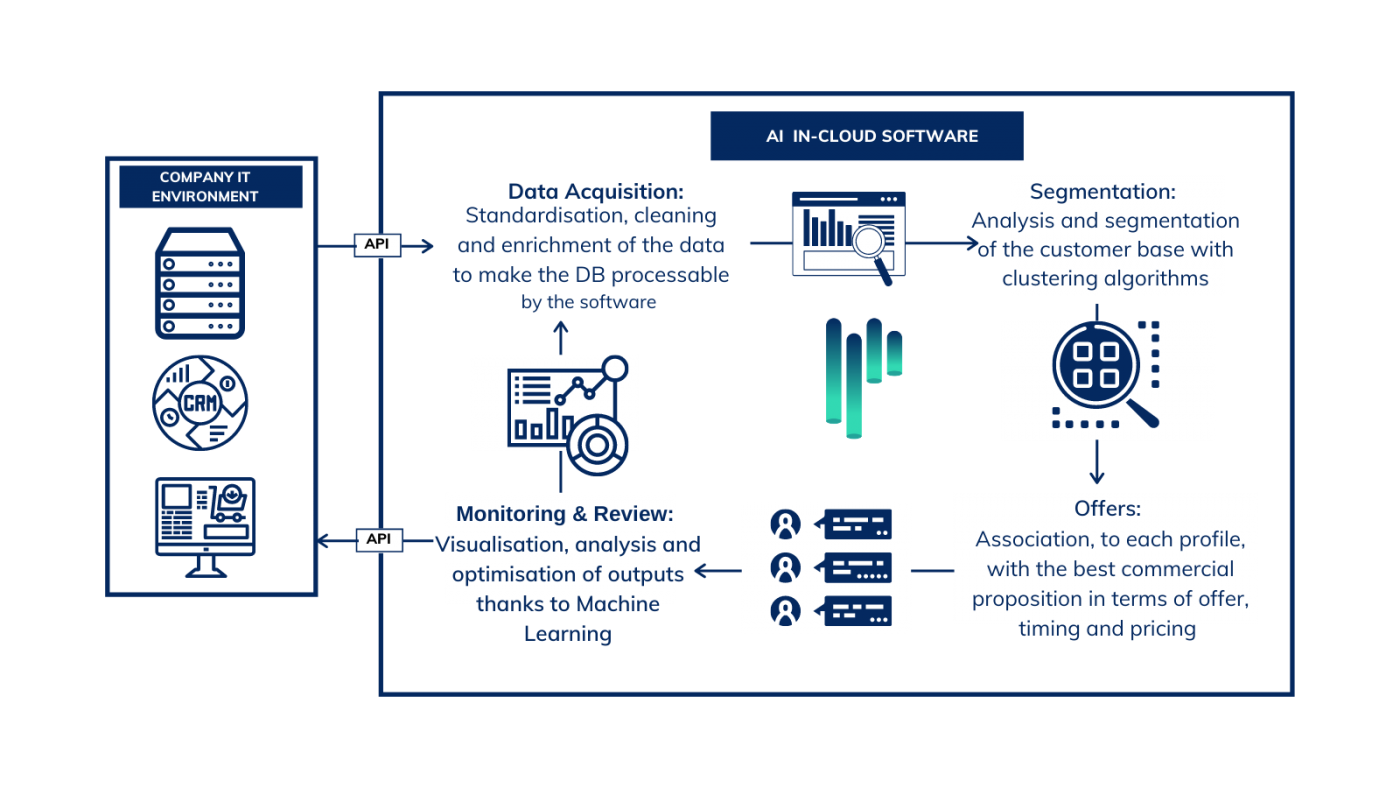The healthcare emergency has profoundly affected the market in 2020, bringing with it great uncertainty for businesses and also stimulating less tech-savvy consumers to approach online. In this new scenario, most companies have had to embark on irreversible digitisation processes.
The demand for goods and services is now increasingly mediated by the use of technology, both in the acquisition of information and in the finalisation of purchases. Suffice it to say that online product shopping in Italy has grown by 31% this year, for a value of €30.6 billion (https://www.osservatori.net/it/ricerche/comunicati-stampa/nellitalia-post-lockdown-gli-acquisti-online-valgono-30-6-mld-con-un-aumento-degli-acquisti-di-prodotto-plus31).
The availability of information for consumers and the potential customer’s determination to identify the offer most in line with their needs, make it increasingly crucial for companies to maintain a proactive relationship of trust with their consumer base, thus trying to reduce the risk of abandonment.
Many companies, thinking in the short term and not to succumb to the daily competition, have opted for a price war approach to acquire new market shares and secure turnover volumes. Promotions and discounts are the most frequently used weapons in the customer acquisition phase, but often without considering the risk of compromising present and future margins. In this mechanism, which focuses more on acquisition than on loyalty, brands often lack the tools to indicate in time how many and which customers are about to turn to a competitor or have already abandoned them and to understand the reasons for this.
Churn Analysis
In such a highly competitive context, churn analysis plays a major role in predictive analysis. The term Churn Rate, in fact, identifies the rate of customers (generally expressed in percentage terms) who have abandoned a brand or service in a given period of time, compared to the total number of customers who have used it in the same period of time.
In many cases, consumers decide to go to another company because they find a better solution, also thanks to the support of the Internet, but just as often they choose to change because the company has not been able to listen to them and satisfy them at the time of their need.
In today’s context, where companies serve tens or hundreds of thousands of people, it is not easy to adopt a management approach aimed at building a relationship of trust, the only one that can truly guarantee loyalty over time. This approach, which is the key to the success of small businesses, is based on attention, care and listening. These are all factors that enable the seller to grasp and anticipate the real needs of the customer, and the consumer to feel ‘looked after’ and receive tailor-made offers.
The role of Artificial Intelligence in customer loyalty
To get to know their customers better and to satisfy them, thus reducing the risk of abandonment, companies have a great ally in Artificial Intelligence. By analysing the vast amount of data acquired from company-customer interactions, purchases, forms, subscriptions to social channels or newsletters, the new technologies make it possible to extrapolate useful information to predict consumer behaviour.
Traditional methods based on manual analysis and traditional tools such as Excel spreadsheets or simple business intelligence dashboards are losing their effectiveness in a rapidly changing market. To extract maximum value from data, it is, therefore, necessary to use more powerful solutions, refined tools, specific IT skills and the use of innovative approaches.
Artificial Intelligence-based software, for example, can automate the process of capturing and analysing information using sophisticated algorithms and provide structured insights that can be translated into direct action with customers, using a process for determining offers for specific customer segments such as the one shown below.

It is, therefore, faster and more effective to analyse the characteristics of customers who have stopped buying in the past to recognise their behaviour and derive useful patterns to identify those in the current customer base who are at risk of dropping out. These same systems, in an integrated way, also suggest the best combination of products to offer to stimulate a new purchase, also identifying the most suitable pricing based on the different types of customers and their relative price sensitivity (the elasticity we have previously discussed in this article https://premoneo.com/en/2020/10/20/price-elasticity/).
Churn Analysis: outputs and benefits
The main outputs that a predictive analysis of this kind can provide include estimates of the probability of churn for different customer segments, identification of factors affecting relationship failure, customised probabilistic scoring and quality indicators.
Supported by AI tools of this kind, management can therefore makedata-driven decisions, ask algorithms to simulate sales trends based on the variation of different parameters of the offer (products and prices) to verify the impacts on margins and turnover and improve commercial performance.
The main objective of Churn Analysis is therefore to minimise the possibility of customers abandoning a brand to turn to competitors, i.e. to minimise the Churn Rate.
Churn Analysis, therefore, represents a strategically important tool for companies, both to know the rate of abandonment of the customer base and to apply in a structured way the correct retention techniques and monitor the results deriving from the adoption of the Customer Retention strategy.


